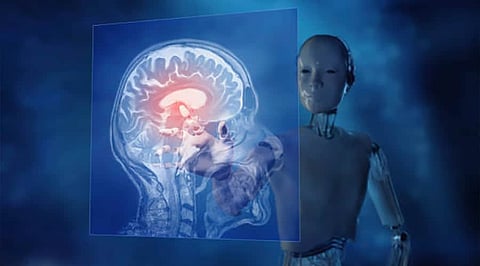

Artificial intelligence has a significant role to play in the increasing digitization and automation of various industries. Advanced technologies like AI, machine learning, NLP, etc., have increased the pace and quality of digital transformation. Life becomes convenient and easier with these technological advancements. Healthcare is an important industry that has been crippling with shortcomings and quality erosion. Although, many healthcare providers have invested in technology to improve the quality and pace of treatment. AI has also proved its expertise in drug development and surgical assistance. Another healthcare sector going through a strong revamp is diagnostics.
Healthcare diagnostics is going through a digital transformation by using digitally enabled diagnosis tools and wearables that use AI and its subsets to provide the best accurate results. Devices connected through IoT and wearables that can detect and diagnose diseases are one of the digital trends to watch for in healthcare. Markets and Markets report reveals the overall wearable AI market is projected to reach USD 42.4 billion by 2023, from USD 11.5 billion in 2018, growing at a CAGR of 29.75% during that period.
The emergence of the Internet of Things (IoT) has enabled many changes as it can connect devices and neural networks for better monitoring and management. IoT in the health sector is also known as the Internet of Health Things (IoHT) which connects devices across the healthcare sector over the internet.
Most of the millennials use wearables to track their fitness activity. AI-enabled wearables have come a long way to being able to guide people on their health routine and also diagnosing health conditions. These wearables can share patient's vitals with the doctors in real-time and get insights based on the data.
In the context of wearables, a Financial Express report says, "While, at present, two-thirds of the world's population doesn't have access to diagnostic care, some of the technologies and devices that have come up in the last few years can certainly help bridge this gap."
Wearables enable people to receive health information on-demand without cutting round for regular checkups in hospitals and labs. Wearables are enablers of self-diagnosis that makes people aware of their health conditions. Self-diagnosis is more useful to eliminate the suspicions and skepticisms related to equipment and hospitals since the reliability increases when the monitoring does not involve anybody else. Let us look at some of the best devices used for healthcare diagnosis.
• Blood pressure is one of the most daunting health problems among us and controlling blood pressure needs consistent monitoring. Wearable devices designed to monitor heart rate and pressure can be useful since we can carry them on us everywhere. MorePro fitness tracker is a watch that automatically monitors real-time heart rate, blood pressure, and ECG. The watch can also be used for tracking fitness activities, sleep, etc. Another example is Apple's smartwatch which has blood oxygen sensors to measure blood oxygen levels.
• Wearable biosensors are a revolutionary step towards digital transformation. Philips has come up with self-adhesive biosensors to monitor patients. These wearable biosensors measure vital signs like heart rate, ECG, skin temperature, and respiratory rate. They also have the capacity to detect falls. Since they are lightweight and wireless it is convenient to carry and use them.
• Another portable device developed by Niramai solutions can detect breast cancer. Breast cancer is one of the diseases that needs early diagnosis for detection and prevention. Niramai device is a low cost, automated screening tool that uses AI algorithms to detect breast cancer. This device uses thermal analytics and ensures complete privacy.
Wearable devices and AI will improve the quality of diagnosis and patient monitoring. The thriving wearable market is introducing new devices to monitor basic vital measurements like blood pressure, heart rate, and ECG. The capabilities of these AI-enabled devices enhance personalized healthcare services in real-time with maximum convenience to the patients. They also reduce the pressure and workload on health professionals since they don't have to physically monitor the patients.
Join our WhatsApp Channel to get the latest news, exclusives and videos on WhatsApp
_____________
Disclaimer: Analytics Insight does not provide financial advice or guidance. Also note that the cryptocurrencies mentioned/listed on the website could potentially be scams, i.e. designed to induce you to invest financial resources that may be lost forever and not be recoverable once investments are made. You are responsible for conducting your own research (DYOR) before making any investments. Read more here.
